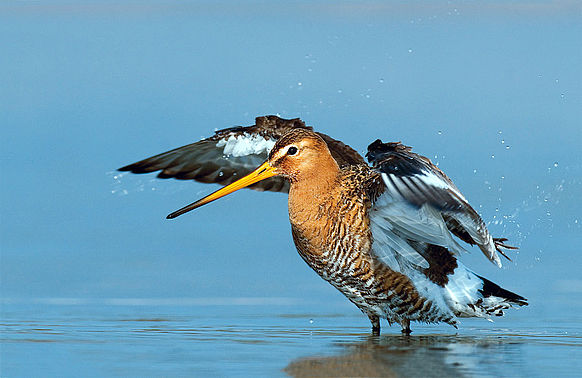The protection of breeding and passage migrant birds is a component of the Master Plan Ems 2050. Some measures of the Master Plan Ems 2050 in the dyke foreland could potentially jeopardise the habitat of some of the birds currently living there. The re-waterlogging of old Ems loops, which should create estuary habitats with riparian forest and reed zones, would deteriorate the quality of meadow bird habitats near the river. This is also why the Master Plan Ems 2050 stipulates the acquisition of 200 inland hectares for bird conservation by the year 2050. The breeding birds in question are primarily lapwings, black-tailed godwits, redshanks, large curlews, and common snipes. Passage migrant birds would also find refuge in the bird conservation areas. The river course, forelands between the dykes, and adjacent inland areas have also been reported as bird conservation and FFH areas.
Before finalising the Master Plan the environmental associations and Meyer Werft, in conjunction with the ship crossovers, agreed on bird conservation measures. This agreement is one of the foundations for the future securing of a location for the shipyard. In the agreement from 2009 the shipyard obligated itself not to convey any large ships during the birds' breeding period - specifically from 1 April to 15 July – for 30 years. This will protect egg clutches in the foreland from flooding via <link informationen glossar emsaufstau green internal link in current>Ems damming.






